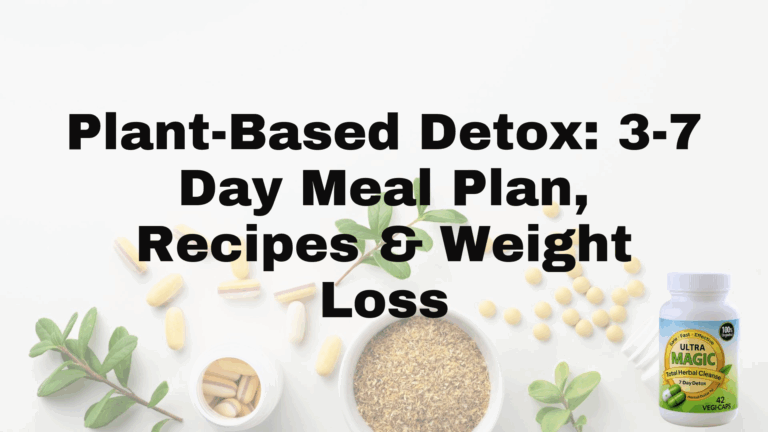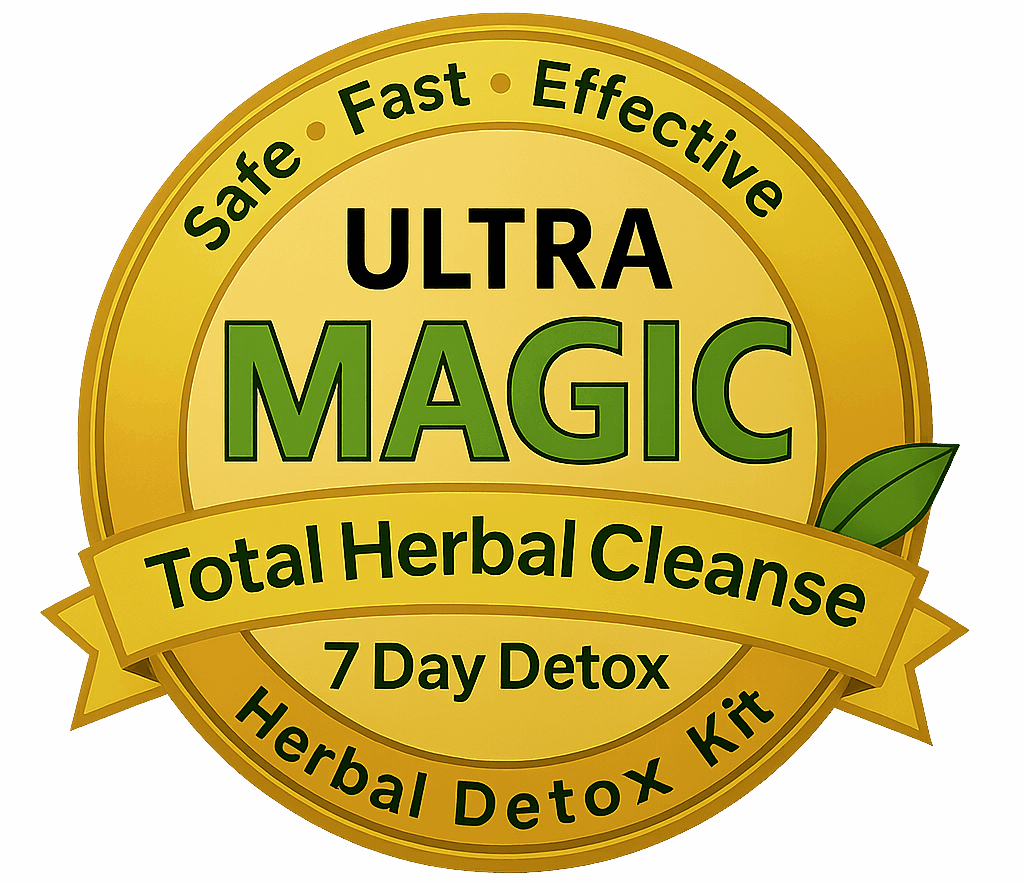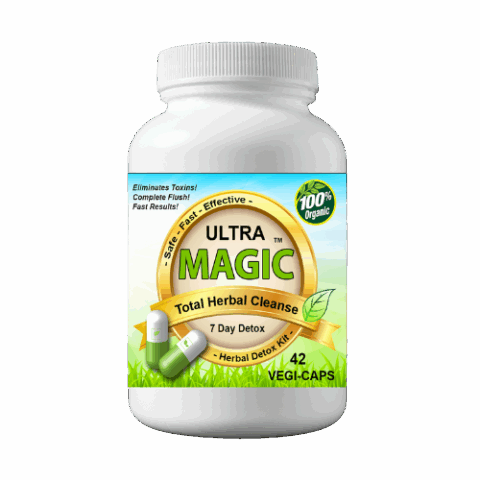
Plant-Based Detox: 3-7 Day Meal Plan, Recipes & Weight Loss
Feeling heavy, bloated, or stuck in a loop of takeout and sweets? If you want a quick reset without starving, pricey juices, or rigid rules, a short plant-based detox can help you feel lighter fast.
For 3–7 days you’ll center vegetables, legumes, whole grains, fruit, nuts, and seeds while pausing alcohol, added sugar, and ultra‑processed foods. You’ll hydrate, eat enough protein and fiber, and move gently. Your liver and kidneys already do the heavy lifting; this plan simply supports them with smart nutrition—not gimmicks. Expect steadier energy, better digestion, less bloat, and a realistic jump‑start for weight loss.
This guide helps you set goals and choose a timeline (3, 5, or 7 days), run a safety check, build a shopping list, and follow clear daily menus. You’ll get batch‑cook recipes, calorie/protein tweaks, budget and allergy swaps, dining‑out strategies, and fixes for common symptoms. We’ll also compare DIY plans with ready‑made options and supplements, then show how to transition so results stick. First up: what a plant‑based detox is—and isn’t.
Step 1. Understand what a plant-based detox is (and isn’t)
A plant-based detox is a short, structured reset that leans on whole plants—vegetables, legumes, whole grains, fruit, nuts, and seeds—while pausing alcohol, added sugars, and ultra‑processed foods. Your liver, kidneys, and gut already detoxify around the clock; this approach supports those systems with hydration, fiber, and steady nourishment (not hunger or gimmicks). Benefits people typically notice in a few days include steadier energy, better digestion, and less bloat. Any early weight loss mostly reflects lower calories, refined carbs, and sodium.
- What it is: A 3–7 day whole‑food plan with ample protein and fiber, lots of water, and gentle movement.
- What it supports: The body’s natural detox pathways—no “flush” required.
- What it isn’t: A juice‑only fast, laxative tea regimen, or mega-dose “detox supplement.”
- What it won’t do: Replace medical care or guarantee specific test outcomes.
Step 2. Set your goals and pick a timeline (3, 5, or 7 days)
Before you start, choose one primary goal for your plant-based detox and define how you’ll measure it. Keep it simple and behavior-based: prep all meals at home, skip added sugar, drink 8–12 cups of water daily, move gently 20–30 minutes, or hit 6–8 servings of vegetables and fruit. Jot baseline notes on energy, digestion, sleep, and bloat so you can track changes.
- 3 days (quick reset): Ideal after travel or takeout streaks. Focus on hydration, veggies at every meal, and cutting alcohol/added sugar. Expect less bloat and steadier energy.
- 5 days (momentum builder): Locks in meal-prep and routine. Add light movement daily and consistent fiber/protein targets.
- 7 days (habit shift): Deepen consistency with batch cooking and variety. Best for reinforcing cravings control and a sustainable, lower‑processed eating pattern.
Step 3. Check safety basics and who should avoid detoxing
A plant-based detox should feel nourishing—not punishing. Because your liver and kidneys already do the detox work, you’re simply supporting them with whole foods, hydration, and fiber. Skip extreme cleanses, laxative teas, and “detox” supplement stacks (supplements aren’t FDA‑approved for safety or efficacy). Keep calories reasonable (many do well in the 1,200–1,800 range shown in reputable meal plans), prioritize protein from beans, tofu, and lentils, and drink 8–12 cups of water daily. Taper caffeine if needed and stop if you feel dizzy or unwell.
- Skip or get medical clearance if you’re: pregnant, breastfeeding, underweight, or have a history of eating disorders.
- Managing conditions/meds: diabetes, kidney/liver or GI disease, hypertension, or medicines affected by fiber/greens (e.g., blood thinners, diuretics) need clinician guidance.
- Just recovered from illness/surgery: wait until fully cleared and eating normally.
- Endurance or heavy training: don’t underfuel; keep carbs and electrolytes up.
- Avoid supplement-heavy “detoxes”: focus on food, not mega-dose powders or pills.
If you’re unsure, check with your healthcare provider before starting.
Step 4. Build your shopping list and pantry staples
Dialing in your cart makes a 3–7 day plant-based detox effortless. Center whole plants, unsweetened items, and no‑salt‑added staples so meals come together fast. Fresh or frozen both work—think color, fiber, and at least one protein at every meal.
- Produce: Mixed greens, kale, cucumbers, tomatoes, spaghetti squash, broccoli, bell peppers, onions, garlic, ginger, fresh herbs, lemons/limes, apples, bananas, berries, avocado.
- Plant proteins: No‑salt‑added canned beans (black, white, chickpeas), lentils, edamame, firm tofu, tempeh, hummus, peanut or almond butter, cashews.
- Grains/starches: Brown rice, quinoa, old‑fashioned oats, whole‑grain pasta, sweet potatoes.
- Healthy fats & seeds: Extra‑virgin olive oil, tahini, chia seeds, ground flaxseed, walnuts, pumpkin seeds.
- Flavor pantry: Low‑sodium vegetable broth, citrus or vinegar, low‑sodium tamari/soy sauce, mustard, spices (cumin, paprika, turmeric, chili flakes), black pepper, sea salt.
- Hydration/extras: Unsweetened soymilk or other plant milk, herbal or green tea, seltzer, optional pea protein powder.
Shop once, batch‑cook key components, and you’ll have mix‑and‑match meals ready all week.
Step 5. Plan your daily routine: hydration, meals, and movement
Routines make a short plant-based detox almost automatic. Block simple anchors for water, meals, movement, and sleep so your body gets steady fuel and your brain gets fewer decisions. Keep the rhythm consistent for 3–7 days and you’ll feel the payoff in energy, digestion, and cravings control.
- Hydration: Aim for
8–12cups daily. Start with12–16 ozwater on waking; sip herbal/green tea or seltzer between meals. Add lemon for flavor if you like (it’s hydrating, not “alkalizing”). Pause alcohol; taper caffeine or keep a small morning coffee/tea window. - Meal rhythm: Eat 3 meals plus 1–2 planned snacks, roughly every
3–4hours. Each time include produce, a plant protein (beans, tofu, lentils, edamame), and a smart carb (oats, quinoa, brown rice, sweet potato) with healthy fats (tahini, avocado, nuts/seeds). - Daily movement: Do
20–30minutes of easy activity—walking, yoga, mobility, or light cycling. Sprinkle in short stretch breaks to aid digestion and reduce stress. - Evening wind‑down: Close the kitchen
2–3hours before bed, dim screens, and aim for7–9hours of sleep. - Mini check‑in: Note energy, bloat, and mood each night; adjust water, fiber, or portions the next day as needed.
Step 6. Follow the 3-day plant-based detox meal plan
Use this 3‑day plant-based detox as a clean, satisfying reset. Portions below land most people near the 1,200–1,500 calorie range common in reputable vegan sugar‑detox plans; adjust up or down with extra veggies, beans, or grains. Batch‑cook once (roasted veggies, brown rice, spaghetti squash, soup) and reuse across days to keep it easy and budget‑friendly.
- Day 1
- Breakfast: Vegan pancakes (omit added sugar) + 1 Tbsp peanut butter + berries.
- Lunch: Roasted veggie + brown rice bowl with baked tofu; light cashew drizzle.
- Dinner: Spaghetti squash with tomato‑basil sauce + no‑salt‑added white beans.
- Day 2
- Breakfast: Quinoa‑chia oatmeal cooked in unsweetened soymilk; top with banana + walnuts.
- Lunch: Leftover spaghetti squash + beans; side greens with lemon/olive oil.
- Dinner: Big salad (greens, cucumber, tomato) + tahini‑lemon dressing + baked falafel patty.
- Day 3
- Breakfast: Green smoothie (kale, banana, apple, water, ice, ground flax) + pea protein.
- Lunch: Edamame & veggie rice bowl; citrus‑lime vinaigrette.
- Dinner: Vegetarian black bean soup + mixed greens with citrus vinaigrette.
- Snacks (choose 1–2 daily): Hummus + celery, steamed edamame in pods, an apple or berries.
Pro tips: Season with herbs, spices, citrus, and low‑sodium tamari. Hydrate 8–12 cups/day, pause alcohol and added sugars, and walk or stretch 20–30 minutes daily.
Step 7. Extend with the 7-day plant-based detox meal plan
Ready to carry your reset through a full week? This 7‑day plant-based detox builds on your Day 1–3 momentum with simple repeats, fresh flavors, and leftovers by design. You’ll rotate roasted veggies, brown rice, spaghetti squash, soup, and sauces so cooking stays light while nutrition stays high in fiber and plant protein. Use the sample menus below as a template—swap similar items you enjoy and scale portions to your hunger, activity, and goals.
- Day 4
- Breakfast: Reheat vegan pancakes (no added sugar) + 1 Tbsp peanut butter + berries.
- Lunch: Citrus‑lime tofu salad (greens, roasted veggies, tofu, citrus vinaigrette).
- Dinner: Big salad + tahini‑lemon dressing + baked falafel patty.
- Day 5
- Breakfast: Whole‑grain English muffin with peanut butter + chia berry “jam.”
- Lunch: Roasted veggie mason jar salad (greens, grains, roasted veg, vinaigrette).
- Dinner: Vegan mushroom stroganoff + steamed broccoli with lemon.
- Day 6
- Breakfast: Quinoa‑chia oatmeal with unsweetened soymilk; top with fruit + nuts.
- Lunch: Roasted veggie mason jar salad (use remaining roasted veg).
- Dinner: Roasted veggie brown‑rice Buddha bowl with baked tofu.
- Day 7
- Breakfast: Green smoothie (kale, banana, apple, water, ice, ground flax) + pea protein.
- Lunch: Leftover vegetarian black bean soup + mixed greens with citrus vinaigrette.
- Dinner: Leftover vegan mushroom stroganoff + steamed broccoli.
Snacks (1–2/day): Hummus + celery, steamed edamame, apple or berries, a small handful of nuts/seeds. To land closer to 1,500–1,800 calories, add a scoop of beans, tofu, avocado, or an extra 1/2–1 cup cooked grains; for a lighter day, emphasize veggies and keep oils modest. Keep hydrating 8–12 cups/day and move 20–30 minutes to support digestion and steady energy.
Step 8. Batch-cook these core recipes for the week
Batch once, cruise all week. A few anchor recipes cover breakfasts, bowls, salads, and quick dinners so your plant-based detox stays simple, satisfying, and budget‑friendly. Cook these on day zero and use them across the 3–7 day plans.
- Colorful roasted sheet‑pan veggies: Mix peppers, broccoli, onions, and squash with spices and a little olive oil; roast until tender. Cool and refrigerate up to 4 days.
- Easy brown rice or quinoa: Cook a big pot; fluff and chill. Portion
1/2–1 cupper meal for bowls and salads. - Soy‑lime baked tofu: Marinate in citrus/low‑sodium tamari; bake until firm. Chill up to 4 days for bowls and salads.
- Spaghetti squash + tomato‑basil sauce: Roast squash and simmer a simple tomato‑basil sauce. Reheat with no‑salt white beans for fast dinners.
- Vegetarian black bean soup: Make a big pot; keeps up to 4 days refrigerated. Freeze extra portions for later.
- Sauces that “make” meals: Creamy cashew sauce, citrus‑lime vinaigrette, and tahini‑lemon dressing. Refrigerate in jars and shake before using.
- Breakfast prep trio: Vegan pancakes (omit added sugar; freeze up to 3 months), a jar of quinoa‑chia oatmeal mix (stores up to 1 month), and 2–3 green smoothie freezer packs (kale, banana, apple).
- Snack essentials: Steam edamame, cut celery, portion hummus, and wash/dry greens so sides and snacks take seconds.
Label containers by recipe and date, and keep a “use next” bin at eye level to reduce midweek decisions.
Step 9. Customize for calories, protein, and weight loss
Detoxes aren’t one‑size‑fits‑all. Use the same plant-based detox framework and flex portions to match your hunger, activity, and goals. Reputable vegan “sugar‑detox” plans land between 1,200–1,800 calories, with daily protein commonly around 50–70 g—you can stay in that range and still feel great. Adjust gradually, watch energy and digestion, and favor whole foods over snacks from a bag.
- For fat loss (lighter days): Fill half your plate with non‑starchy veg, keep oils modest, choose fruit over nuts for snacks, and cap grains at
~1/2 cup cookedper meal. Use citrus/herbs for flavor instead of extra dressing. - For maintenance/performance (more fuel): Add
1/2–1 cupcooked grains,1/2 cupbeans or extra tofu/tempeh, or1/4avocado at meals. Include one additional planned snack. - For more protein (without junk): Double beans/lentils in bowls and soups, add edamame, choose tofu/tempeh at least once daily, and add a scoop of plant protein to smoothies or oats.
- Mind scale swings: Water, sodium, and glycogen shifts change day‑to‑day weight. Track habits and how you feel first; the number will follow.
Step 10. Make it work on a budget, with allergies, or dining out
A plant-based detox doesn’t have to be pricey or complicated. Keep the same simple framework—plants first, steady protein, smart carbs, and hydration—and adapt it to your wallet, your needs, and real life when you’re not cooking at home.
Budget-friendly swaps
Stretch your dollars by repeating meals and leaning on versatile staples you already prepped.
- Buy smart: Choose store brands, fresh or frozen produce, and no‑salt canned beans.
- Cook once, eat twice: Big batches of rice/quinoa, roasted veggies, soup, and tofu.
- Pick value proteins: Lentils, chickpeas, black beans, and firm tofu.
- Flavor cheap: Citrus, garlic, spices, and a small splash of low‑sodium tamari.
Allergies and intolerances
Keep the structure; swap the component.
- Gluten‑free: Use oats labeled GF, brown rice, quinoa, and GF pasta.
- Soy‑free: Skip tofu/edamame/tamari; double beans/lentils and use olive oil, lemon, and herbs.
- Nut/seed‑free: Replace tahini/nut butters with avocado or white‑bean purée for creaminess.
Dining out (3 quick plays)
Scan menus for bowls, salads, and veggie mains; build the plate you’d make at home.
- Mexican: Burrito bowl with beans, fajita veggies, salsa, avocado; skip cheese/sour cream.
- Mediterranean: Greens + chickpeas + grilled veg; lemon, herbs, and olive oil on the side.
- Asian: Veggie stir‑fry or brown‑rice bowl; tofu if tolerated; ask for light sauce. Order water, seltzer, or tea and pass on alcohol and desserts for the detox window.
Step 11. Troubleshoot common “detox” symptoms and cravings
The first 1–3 days of a plant-based detox can feel a bit off. That’s usually not “toxins leaving,” but shifts from less sugar/alcohol, more fiber, and caffeine changes. Most bumps resolve with small tweaks below. If symptoms are severe or persistent, pause and check with your clinician.
- Headaches: Hydrate steadily, don’t quit caffeine cold turkey—taper with a small morning coffee/tea. Add a pinch of salt to meals and take a short walk.
- Low energy/lightheaded: Don’t under-eat. Add
1/2–1 cupoats, rice, or sweet potato and1/2 cupbeans or tofu at meals; keep 1–2 planned snacks. - Bloat/gas: Shift toward cooked veggies, chew well, and add fiber gradually. Sip warm water or herbal tea.
- Constipation: Drink
8–12cups water, include chia/flax daily, eat beans/greens, and walk after meals. - Loose stools: Emphasize gentle foods (oats, bananas, rice), limit raw/crucifers and spicy/fatty sauces for a day or two.
- Sugar/salt cravings: Pair protein + fiber (edamame, hummus + veggies, apple + peanut butter), use seltzer or tea, brush teeth, and wait 10 minutes.
- Mood/sleep dips: Eat on a schedule with carbs at each meal, get daylight and light movement, stop caffeine by midday, and wind down screens at night. Avoid “detox” teas or supplement stacks.
Step 12. Compare DIY plans vs. ready-made programs and supplements
DIY plans and ready‑made programs can both power a plant-based detox; the right pick comes down to time, budget, and how much structure you want. Food‑first always wins—you don’t need a supplement to benefit. Be cautious with “detox” teas or stacks; in the US, supplements aren’t pre‑approved by the FDA, and many make outsized claims. If you add anything, treat it as optional and vet it carefully.
- DIY meal plan
- Pros: Lowest cost, full ingredient control, easy to mirror 1,200–1,800 kcal vegan “sugar‑detox” templates.
- Cons: Requires shopping, batch‑cooking, and planning.
- Ready‑made programs
- Pros: Turnkey convenience, chef‑prepared plant‑based menus, built‑in portioning with no added sugar/alcohol.
- Cons: Premium price, fixed menus, recurring deliveries.
- Supplements
- Role: Optional; can complement food and hydration, not replace them.
- Choose: Transparent ingredients (whole herbs), GMP/FDA‑registered manufacturing, lab/third‑party tested, clear instructions, reasonable guarantees.
- Avoid: Laxatives/diuretics, mega‑dose “cleanses,” promises to “flush” or “cure.”
Pick the path you’ll stick to for 3–7 days; next, you’ll lock in how to maintain results after your detox.
Step 13. Maintain results: how to transition after your detox
You’ve built momentum—now lock it in without swinging back to old habits. Think “add, not subtract.” Keep the simple rhythm you practiced—plants at every meal, steady protein and fiber, 8–12 cups of water, and light daily movement—then reintroduce foods thoughtfully so energy, digestion, and weight trends stay on track.
- Go 80/20: Keep breakfast and lunch plant‑based all week; flex dinner or weekend meals.
- Reintroduce slowly: Add back alcohol, sweets, dairy, or gluten one at a time; note changes in digestion, energy, sleep, and cravings.
- Keep protein steady: Include beans/lentils/tofu or tempeh at 1–2 meals daily; adjust portions to hunger.
- Hit fiber, sip water: Aim for
~25–35+ gfiber (your plan averaged 30–40 g) and keep hydrating. - Batch the basics: Roast veggies, cook grains, prep a soup and two sauces every Sunday.
- Move most days:
20–30minutes daily + 1–2 short strength sessions to support fat loss. - Plan treats: Choose 1–2 intentional indulgences weekly, portion them, enjoy, move on.
- Weekly check‑in: Track behaviors first (meals, water, movement); let the scale be secondary.
Step 14. FAQs about plant-based detoxes and weight loss
Short resets work best when they’re simple, food‑first, and flexible. Your body already has a powerful detox system; whole plants, hydration, and fiber simply support it. Use these quick answers to stay confident, safe, and consistent through your 3–7 day plant-based detox.
- Does this actually “detox” me? Your liver, kidneys, and gut already detoxify. A plant-based detox supports them with hydration, fiber, and steady nourishment—no extreme cleanses needed.
- How much weight will I lose in a week? Healthy loss averages 1–2 lb/week. In 3–7 days expect small, mostly water/glycogen shifts; habits drive lasting fat loss.
- Is coffee allowed? Yes, keep a small morning coffee/tea and taper to avoid headaches. Skip alcohol; choose water, herbal/green tea, and seltzer.
- Will I get enough protein? Yes—beans, lentils, tofu/tempeh, edamame, and optional plant protein easily land most people near 50–70 g/day.
- Do I need juices or “detox” teas/supplements? No. Food‑first works. Be cautious: in the US, supplements aren’t FDA pre‑approved for safety/efficacy.
- Can I work out? Do 20–30 minutes of easy movement daily. If you train hard, don’t underfuel—add carbs, fluids, and electrolytes.
- Is this safe for everyone? Get medical guidance if pregnant/breastfeeding, underweight, managing conditions/meds (e.g., diabetes, kidney/liver/GI), or with an ED history.
- How often should I do this? Use it as a reset, then keep an 80/20 plant‑forward routine. Repeat occasionally if helpful—not required.
- Will this help me pass a drug test? No plan can guarantee test outcomes. This guide supports general wellness, energy, and digestion—not specific test results.
Final thoughts
You now have a simple, food‑first blueprint for a 3–7 day plant‑based detox that actually fits real life. Keep meals colorful and repeatable, drink water steadily, and move a little every day. Most people feel lighter, calmer, and more energized within a few days—and the momentum you build can support sustainable weight loss when you roll into an 80/20 routine. If you prefer extra structure or a discreet herbal companion to your reset, consider exploring Magic Detox™. Supplements are optional—use them responsibly, keep the focus on whole foods and hydration, and let consistency do the heavy lifting long after your detox window ends.



